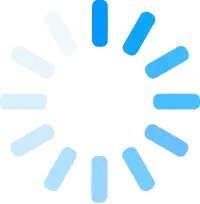The contractual lifetime of ABC Growth Fund is 8 years. It has made majority of its investments in the first five years and started realizing returns in the next five years.
finance
Description
Fall 2019
Please work on
these problems in an excel file (a template is provided). Each problem should
be an individual tap. Name the tap with the problem number, for instance,
problem 1, problem 2, etc.
Private Equity Return (20)
The contractual lifetime of ABC
Growth Fund is 8 years. It has made majority of its investments in the first
five years and started realizing returns in the next five years. Here are the
cash flow data related to the investments of ABC Growth Fund. Calculate its
cash-on-cash return and IRR upon the liquidation of the fund. All amounts are
in millions.
|
Portfolio
Company |
Year
0 |
Year
1 |
Year
2 |
Year
3 |
Year
4 |
Year
5 |
Year
6 |
Year
7 |
Year
8 |
|
A |
($5.00) |
($7.50) |
($3.00) |
0 |
0 |
$65.00 |
0 |
0 |
0 |
|
B |
($3.50) |
0 |
0 |
0 |
0 |
0 |
$0.10 |
0 |
0 |
|
C |
0 |
($4.00) |
($4.00) |
($4.00) |
0 |
0 |
0 |
$55.00 |
0 |
|
D |
0 |
0 |
($3.00) |
0 |
($2.00) |
0 |
0 |
0 |
$1.00 |
|
E |
0 |
0 |
($6.00) |
($8.00) |
($10.00) |
0 |
0 |
0 |
$150.00 |
A.
What is
the cash-on-cash return and IRR from each investment? (5)
B.
What is
the equal weighted cash-on-cash return and IRR of ABC Growth Fund’ whole
portfolio? (5)
C.
What is
the value weighted cash-on-cash return and IRR of ABC Growth Fund’s whole
portfolio? (5)
D.
What is
the pooled IRR of ABC Growth Fund’s whole portfolio? (5)
2. Assessing and Valuing GENEDATA (42)
A new analyst for a large venture capital firm, you are
anxious to demonstrate the skills you learned in your Entrepreneurial Finance
course and prove that you are worth your attractive salary. Your first
assignment is to analyze the value of a startup company “GENEDATA”.
Background of GENEDATA
Genedata was spun off in 1997 from Novartis, the global
pharma giant created from the merger between Ciba-Geigy and Sandoz the previous
year. The founders, most of them computational bioscience specialists formerly
part of the Central Research Unit at Ciba-Geigy, decided to provide integrated
solutions to the global bioinformatics market, focusing on data analysis
applications for genomics research. Its offering differed from its competitors
by the ability to provide an integrated service pack, including system support,
software development, technology transfer, data analysis and consulting, and
specifically addressing the customers’ needs. Genedata had also come away from
Novartis with some important customers, including Norvartis itself, Bayer and
Boehrigner Ingelheim.
Management
Genedata’s staff consisted of scientists with backgrounds in
mathematics, statistics, physics, computer science and molecular biology or
biochemistry. The team had superior expertise in these various technical areas
which, combined, represented a very potent mix. On the other hand, business
development and marketing skills were becoming critical for the company, and
these areas were still in short supply.
Market
Competition in bioinformatics included four public companies
and more than a dozen private ones. Geographically, Genedata focused on the
European market (mainly Switzerland, Germany and Austria) where it targeted
commercial as well as non-profit research companies. Genedata differentiated
itself by providing an integrated service package, including system support,
software development, technology transfer data analysis and consulting. Most
other players in the field were research institutions, with limited business
expertise. US bioinformatics firms had sor shied away from the European market.
A more serious threat came from manufacturers of bio-chips, small “laboratories
on a chip” that would allow most bioinformatics processes to be carried out
automatically, with very high speed and in a controlled environment.




